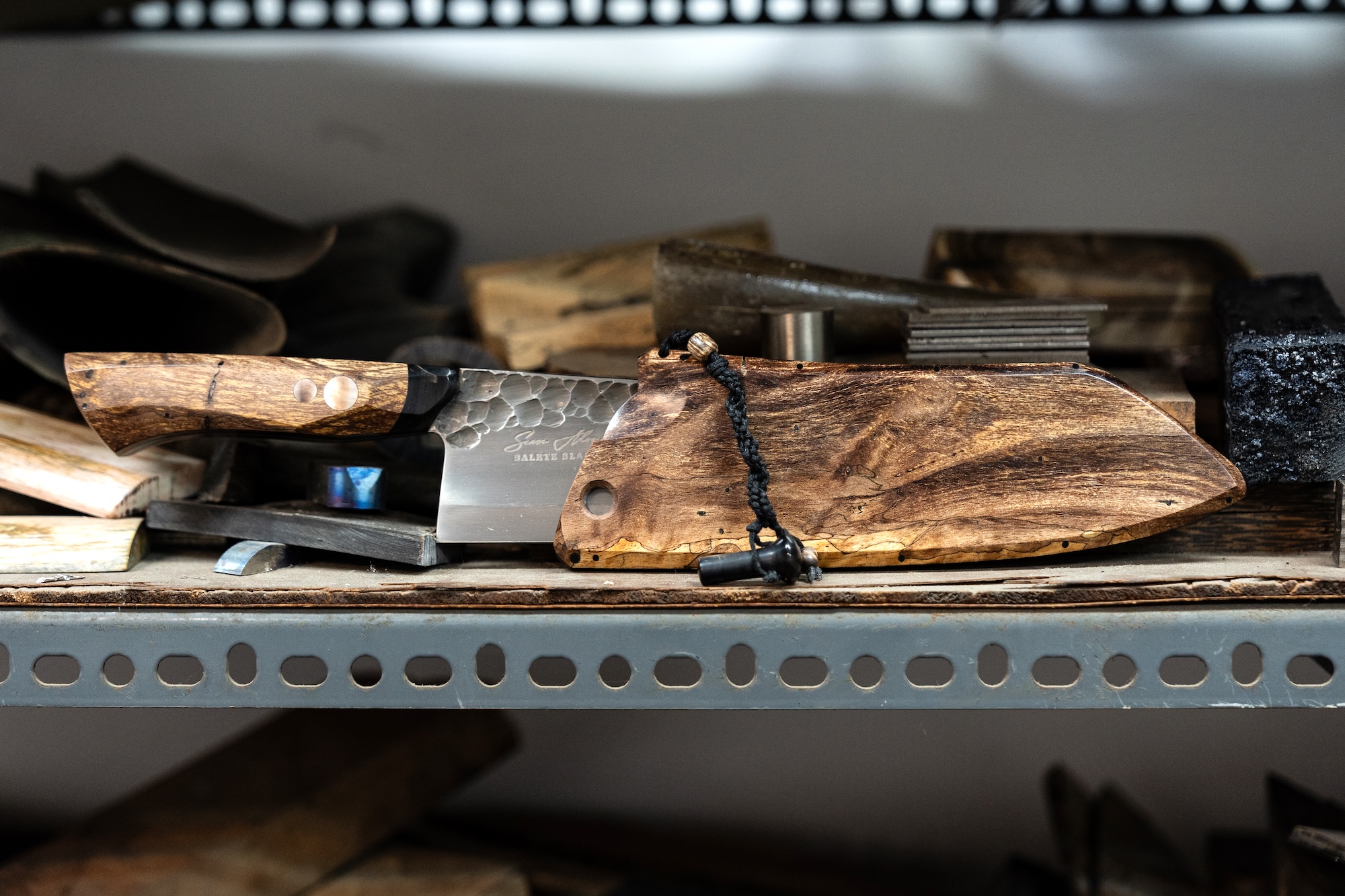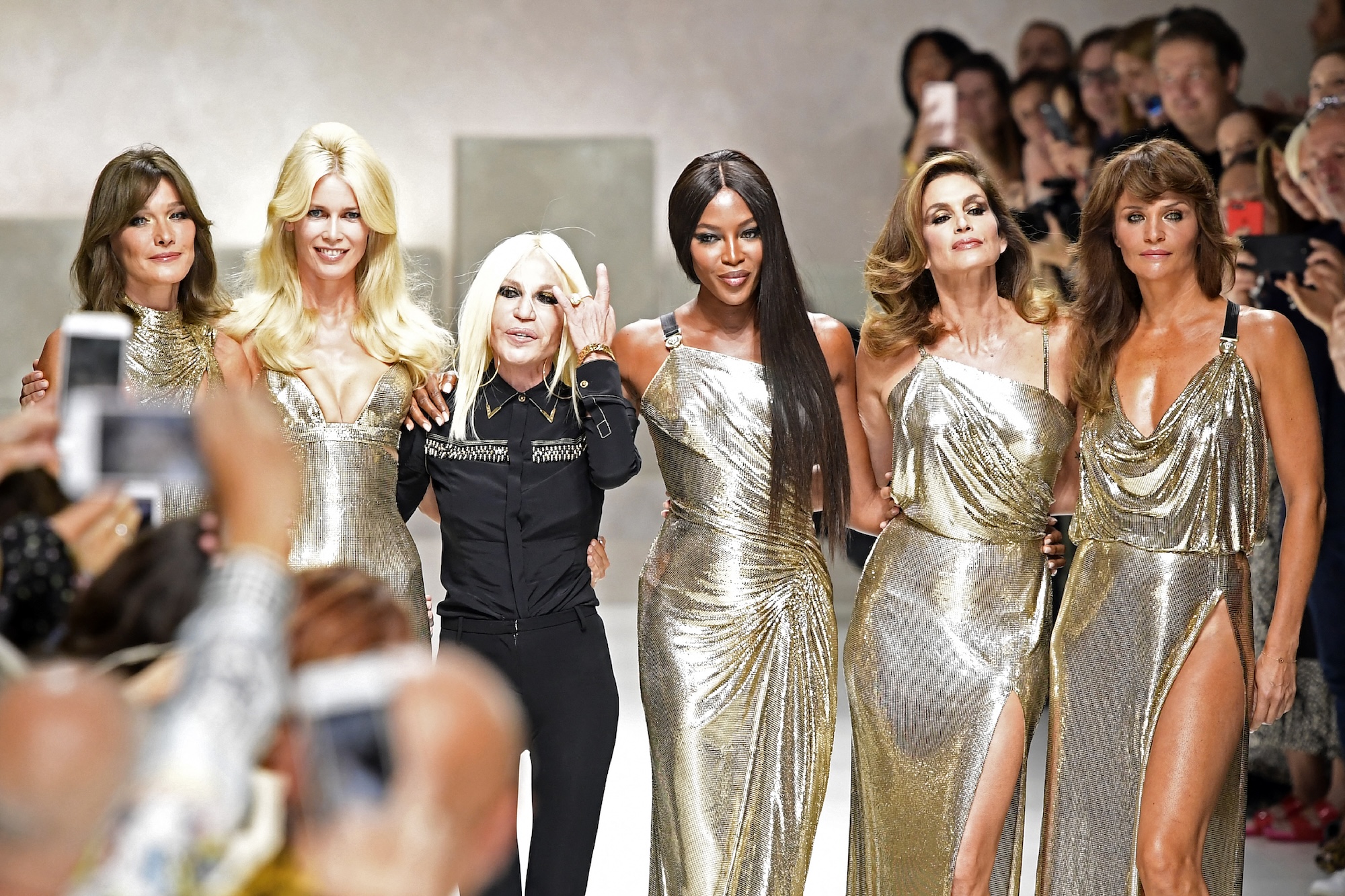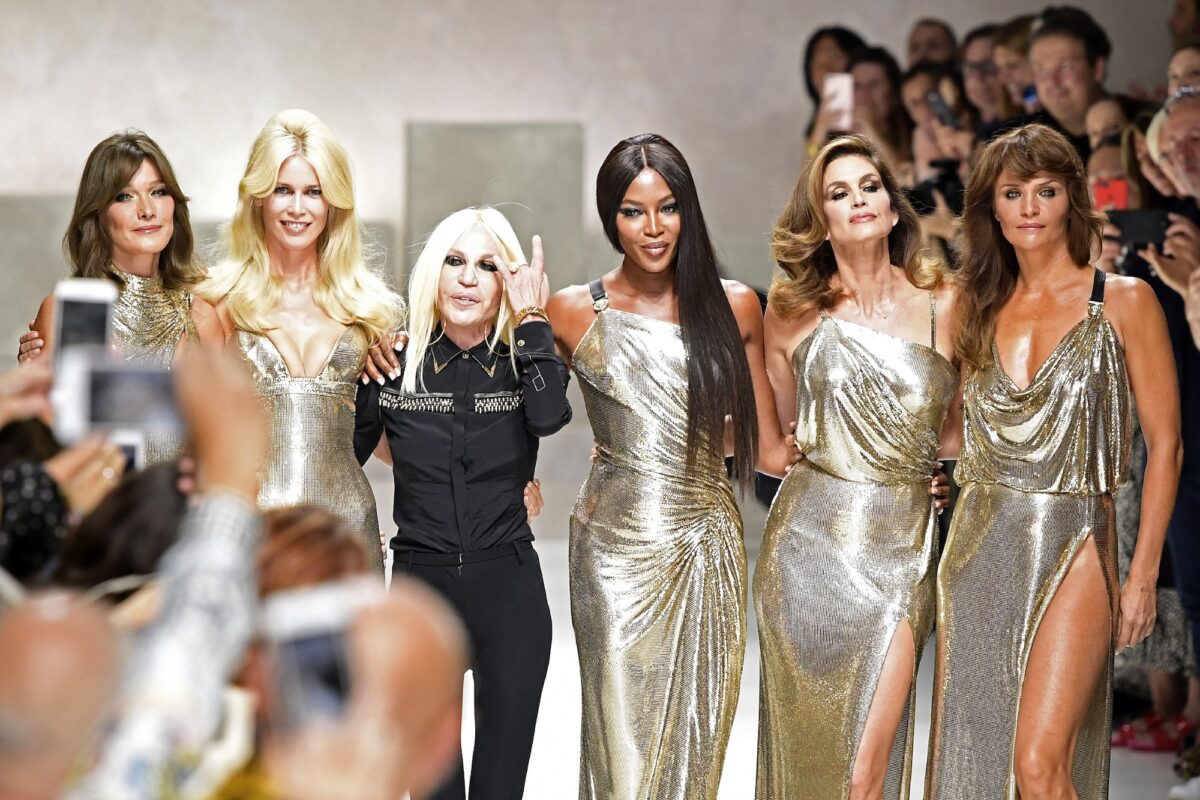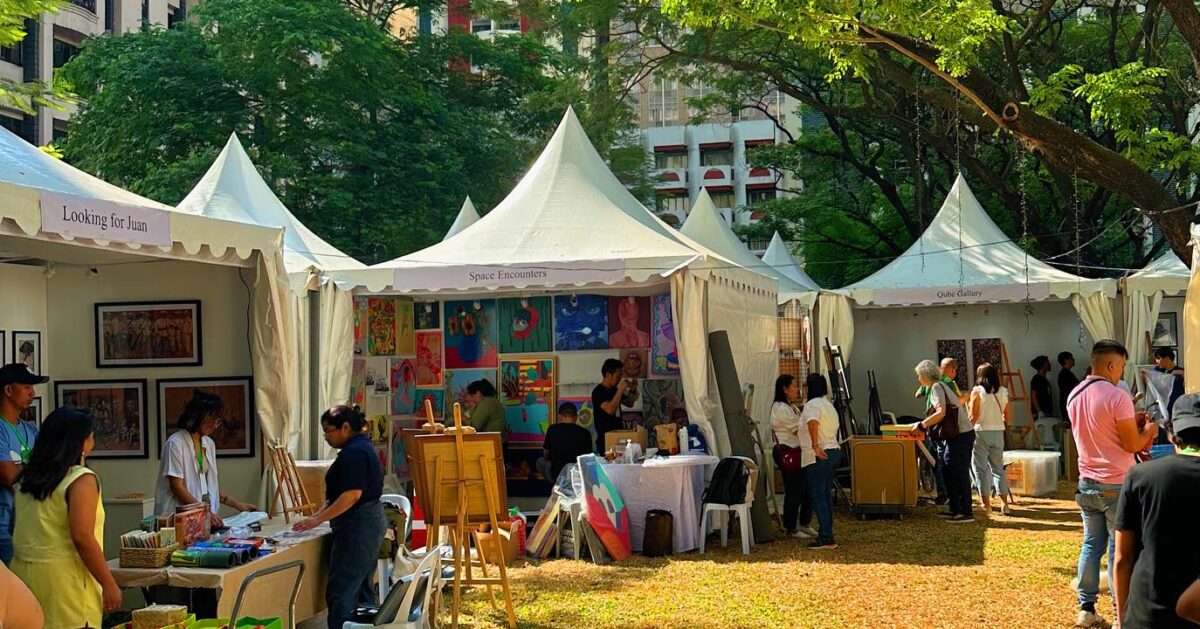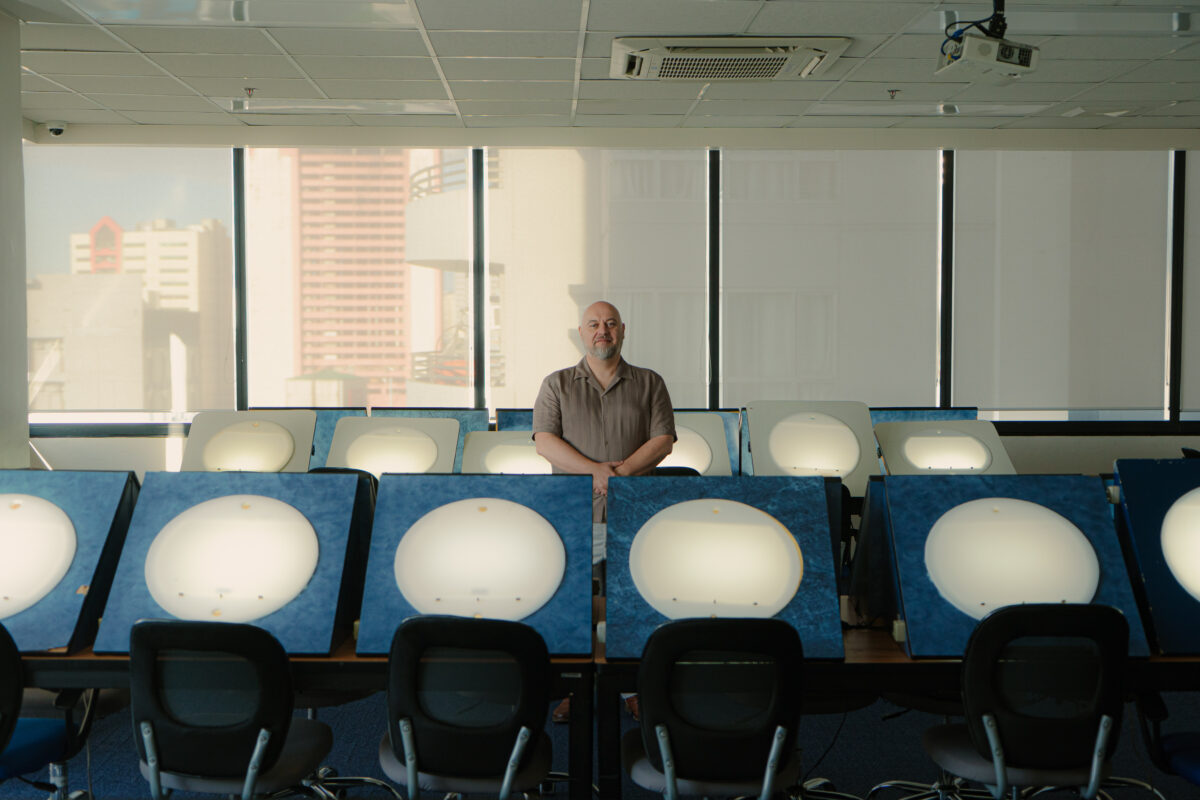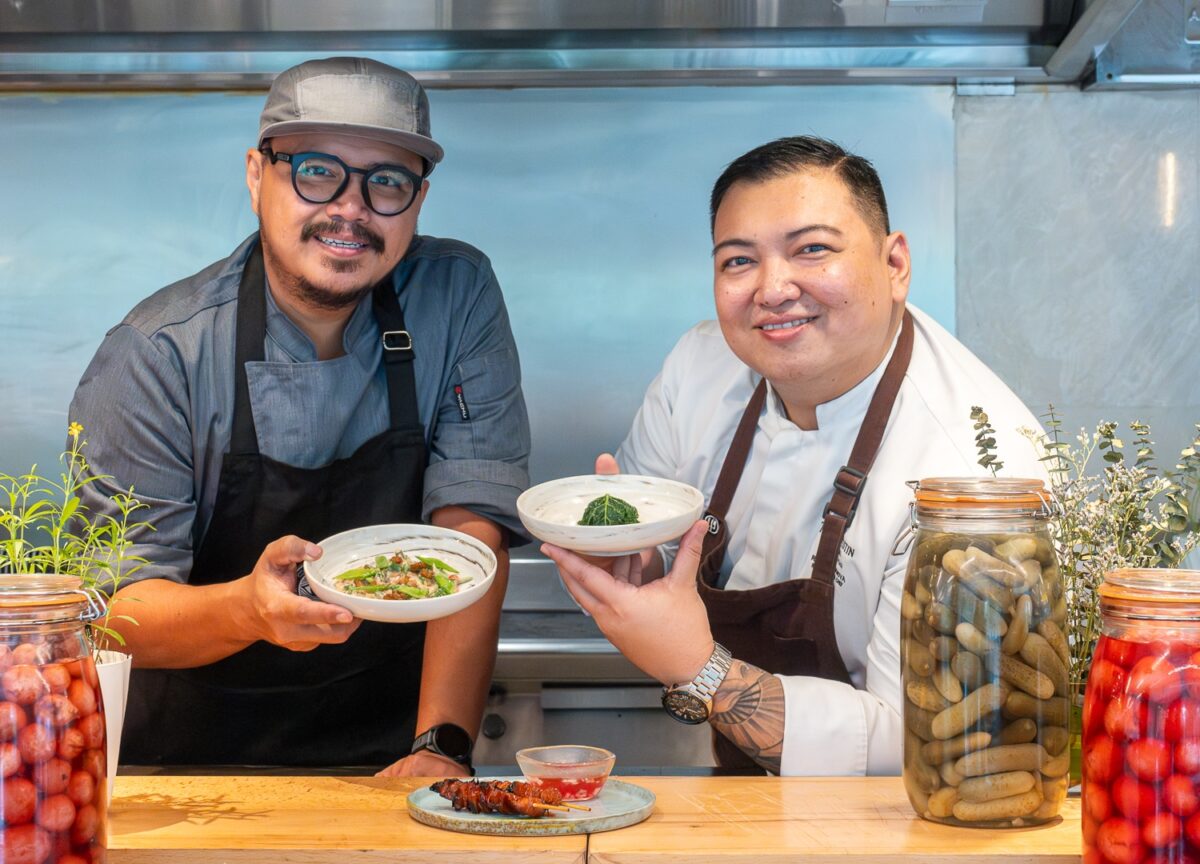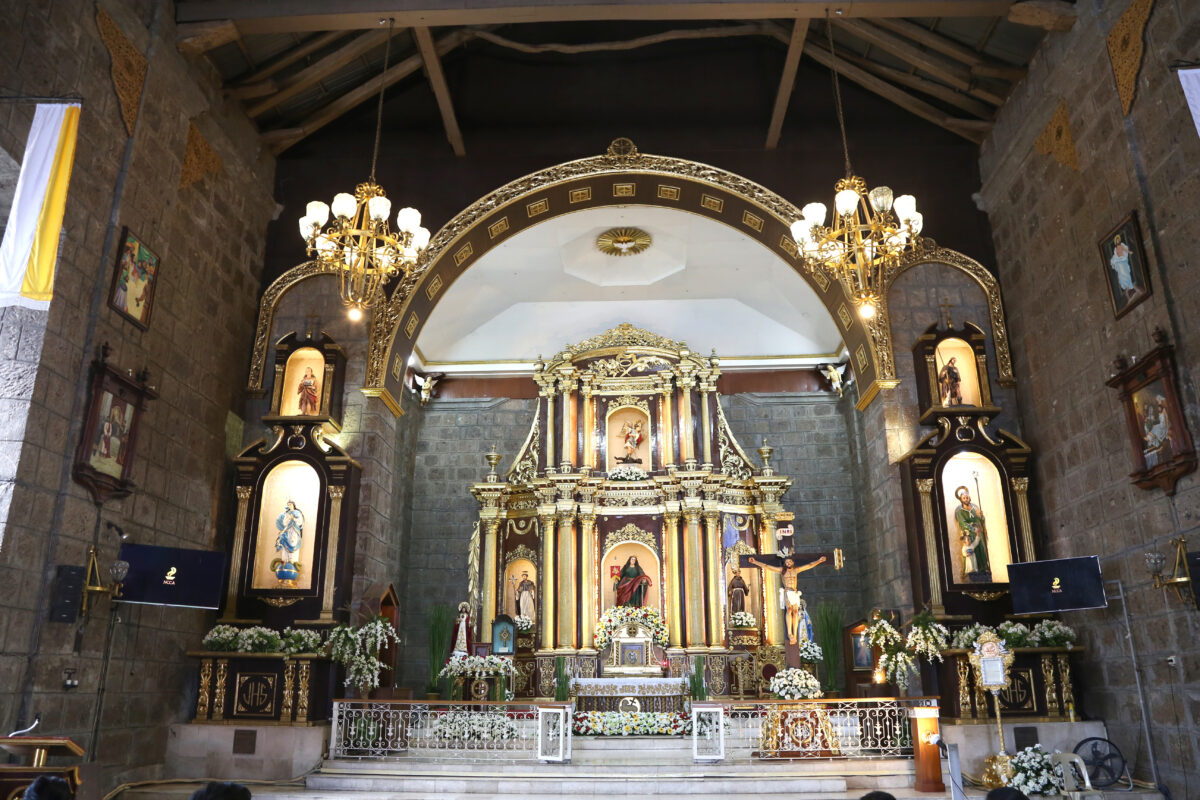Bladesmith, blacksmith, sculptor, knife maker, designer or metalbender, whatever you call Sean Alonzo of Balete Blades, the result is always cutting-edge
Let’s get one thing straight: Sean Alonzo doesn’t make weapons.
Or at least, he consciously decries the idea of his knives functioning outside their utilitarian or artistic context.
“I could probably make something way better than whatever’s in the market in terms of utility and material stability but then it’s just against my values to make something like that,” he says matter-of-factly.
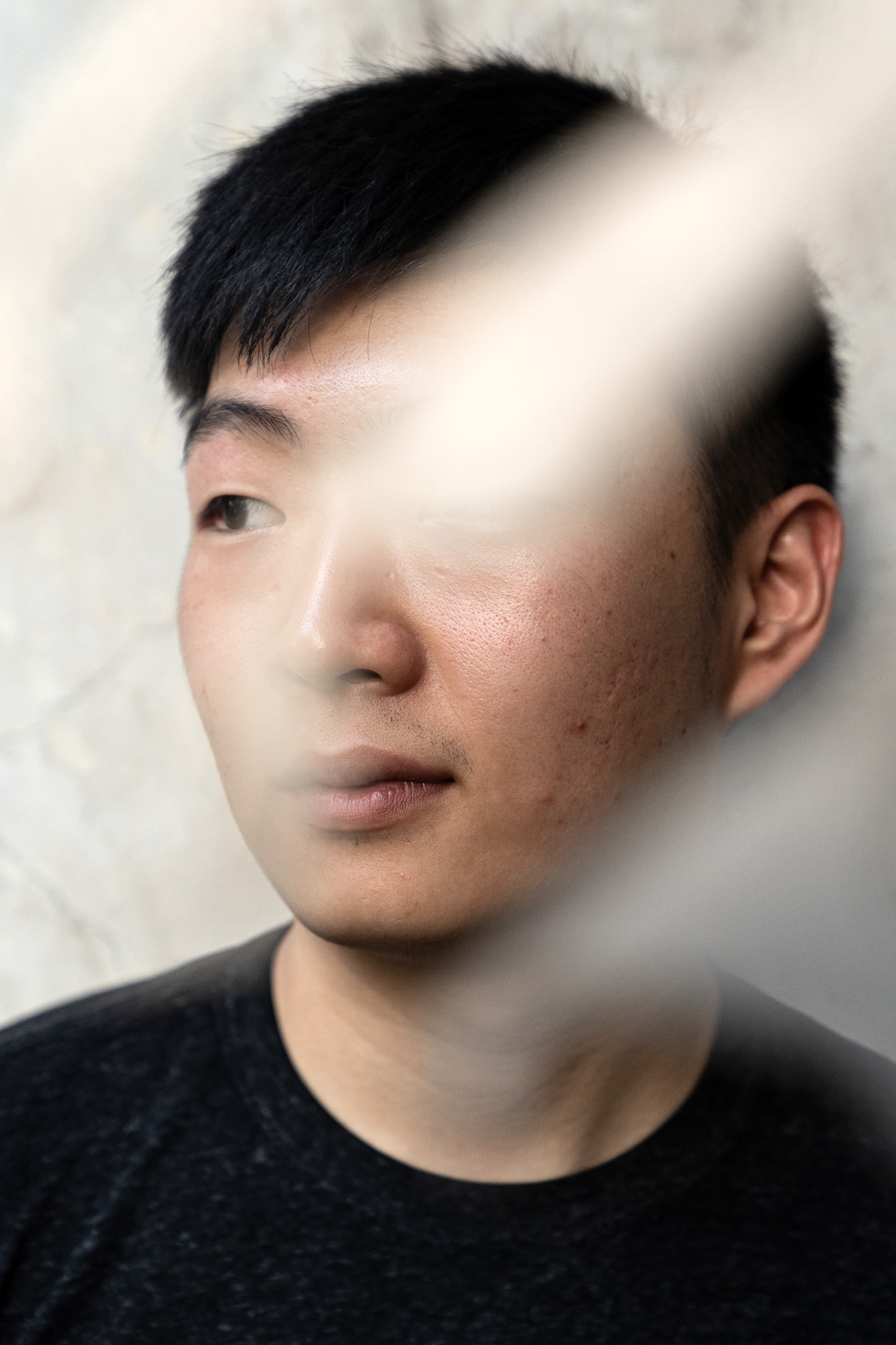
A product of multidisciplinary design backgrounds with a fondness for material manipulation and a fascinating affinity for “Dungeons & Dragons”—his assistant’s nickname is “Goblin,” Ani Cafe co-owner and Balete Blades’ media and marketing guy Chewi Crisologo is a “priest because he gives us health potions,” and Alonzo is a self-proclaimed “city dwarf”—the 27-year-old’s craft is forged from a clear-cut identity: bespoke designer blades that get collectors’ juices flowing.
“There’s not one specific profession that likes these things. It’s like jewelry for men… Like fancy watches, fancy knives, fancy cars. It’s just different scales of different things,” he says.
“There’s not one specific profession that likes these things. It’s like jewelry for men… Like fancy watches, fancy knives, fancy cars. It’s just different scales of different things”
On a visit to his Pasay workshop inside a compound that’s shared with a paper mill, an architecture firm, and a pop-up and display stand manufacturer, Alonzo’s precision is on full display. But it comes in many forms—except perhaps in his ground-floor space judging from the creative clutter that is somehow indicative of the “messy genius theory.”
“I always work off a creative mess,” he says.
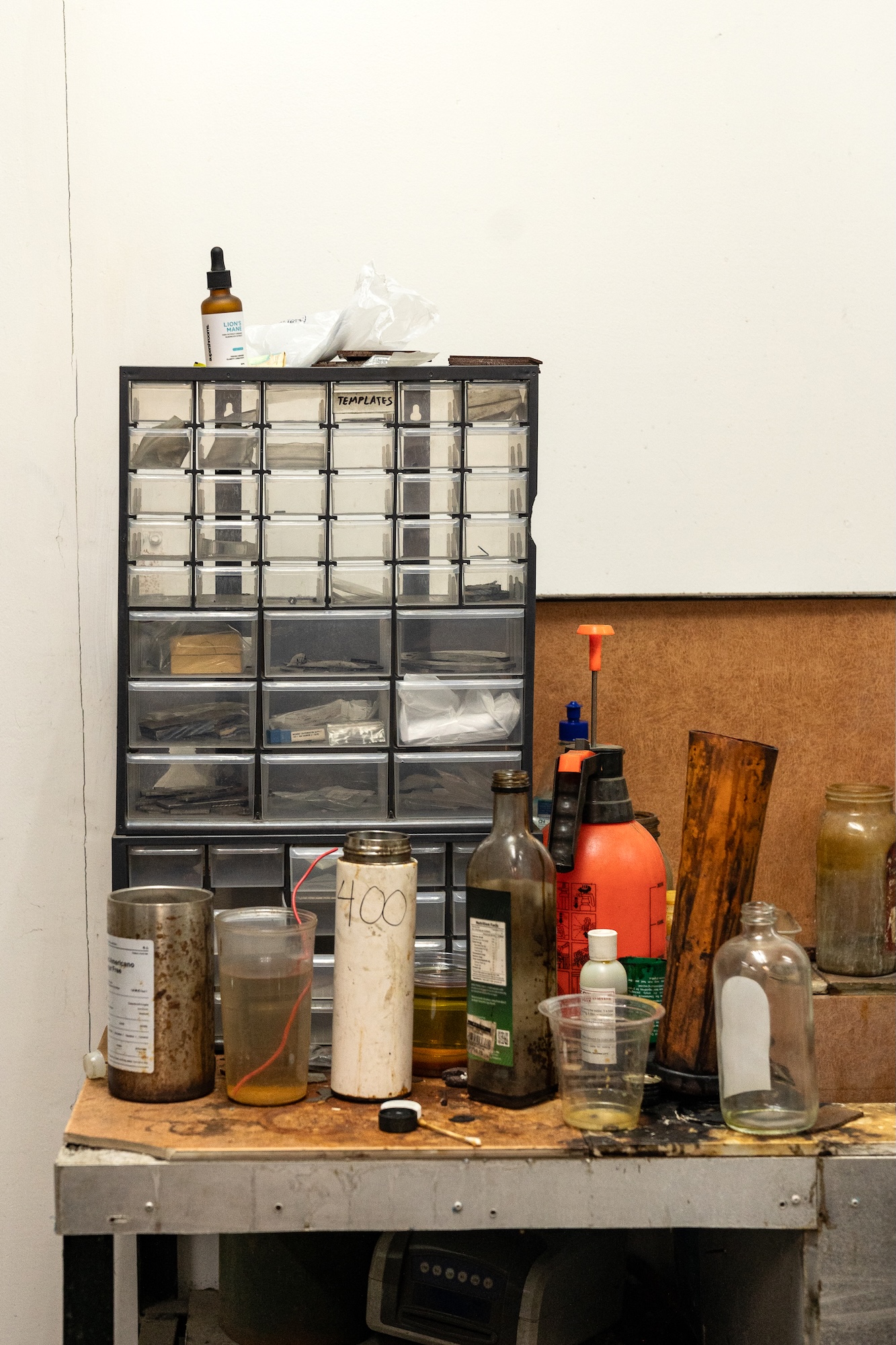
Alonzo’s clarity is distinctly internal and innate. Instinctive to a degree. Intuitive in spades, emphatically inherent. And it pervades much of his work even when he needs to be both technological and technical—two qualities that date back from his early days as an industrial design student honing his metalworking and woodworking techniques in his dorm at De La Salle-College of St. Benilde where he “secretly” made his first knife (a carving knife for wood)—out of a “really old file” bought from a hardware store.
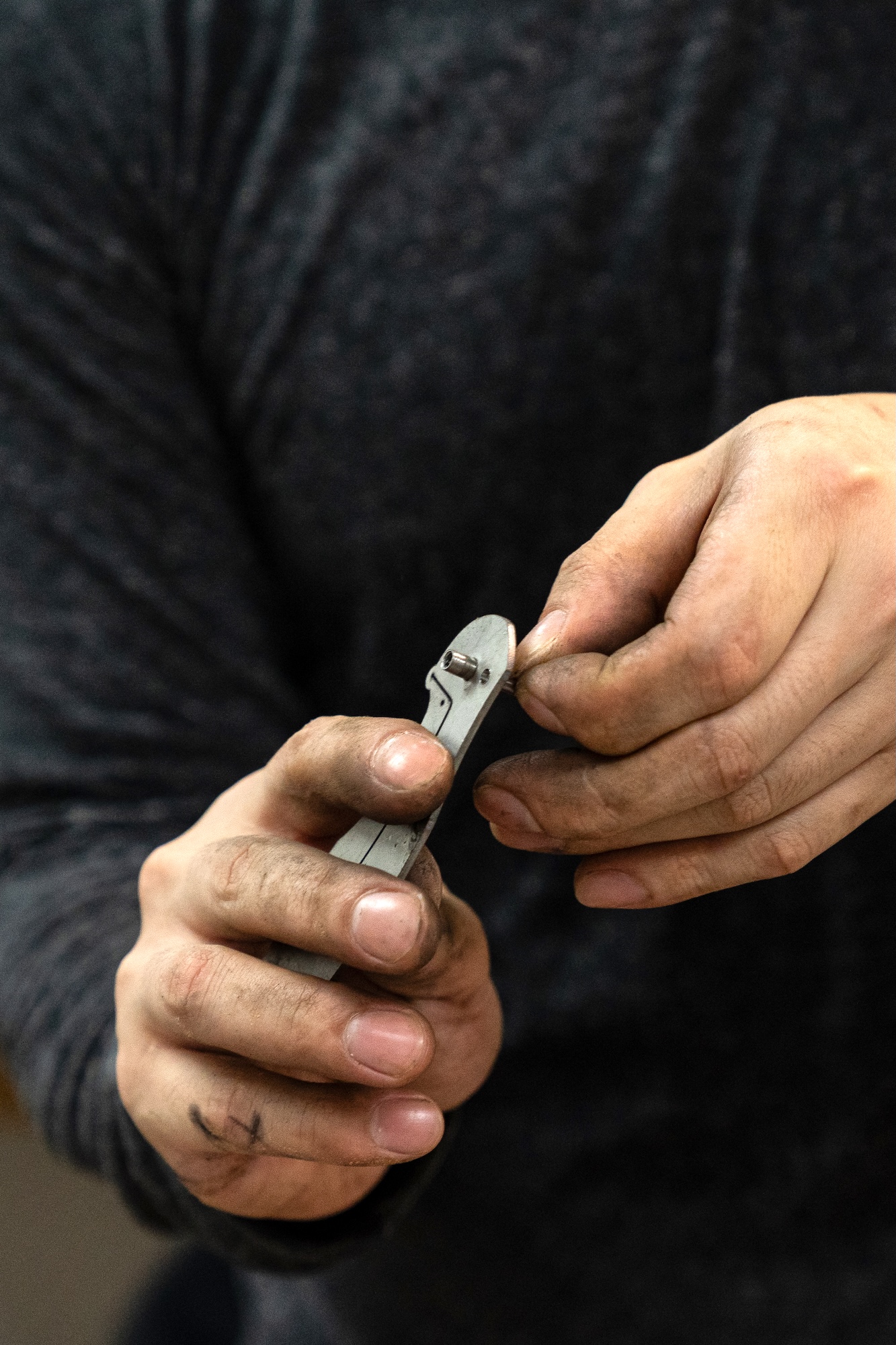
These days, Alonzo’s precision is seen in the handcrafted heirloom knives under the Balete Blades brand. His kind of precision is stacked up inside his brilliant mind, coursed through characteristic hands that grip tools and perform labor, and an understanding of technology all in servitude of a craft he eventually fell and found himself into.
“I’ve never called myself traditional in any way because I’m not and I don’t like limiting myself to things,” he says, after explaining the design decisions he’s been pondering on for the finger choil of the bolo he’s crafting for a month-long pop-up exhibit and charity auction at Space63 in Comuna.
Slice of the action
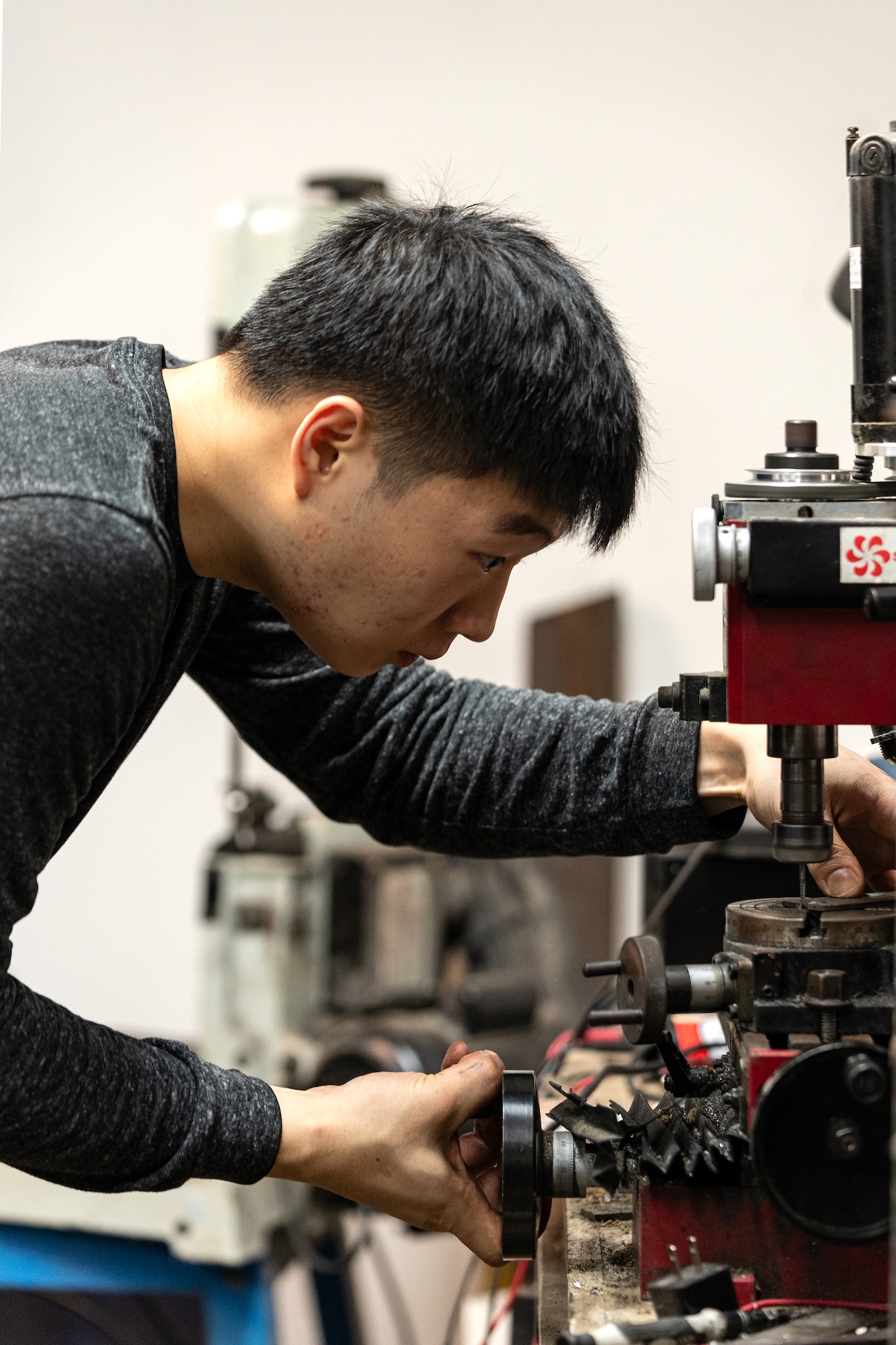
Alonzo’s talent is undeniable because, as he opens up in the conversation, a lot of knife making is both driven by technical and design expertise. But even more so when you realize the makeshift quality of his process, as the beautiful handcrafted knives belie the arduous improvisation Alonzo pulls off.
Amid shelves of black boxes where the knives are packaged, nuts and bolts organized in small shelving units, various woods and raw materials—from a 200-year-old Westinghouse black glass and a high-end CPM 154 steel to a mammoth molar fossil whose finish looks more like a Van Gogh painting—and versatile tools scattered in a studio that practically goes around a mango tree, Alonzo happily demonstrates his “tuning” process on a 3-axis mini mill where “I make a piece of metal resemble a knife.”
Sean Alonzo’s talent is undeniable because, as he opens up in the conversation, a lot of knife making is both driven by technical and design expertise
“Industrially, this is not actually what it is used for,” says the artisan over the din of the tabletop cutting machine. “The professional ones are bigger than me, and they could do cuts that are really stable. But then for folding knives, I had to figure out what worked within a reasonable budget.”

Generally speaking, that’s just the kind of artist Alonzo is. The do-it-yourself method to his bladesmithing is a means to the end in his visionary mind and it doesn’t bother him in the slightest bit, especially when the craftsmanship of his nonconformity results in sharp pieces of art that fetch from anywhere between $2,000 to $6,000.
This probably explains why Alonzo is a compelling artist to behold: He turns tools and technology inside out to work for him.
Finest cuts from Balete Blades
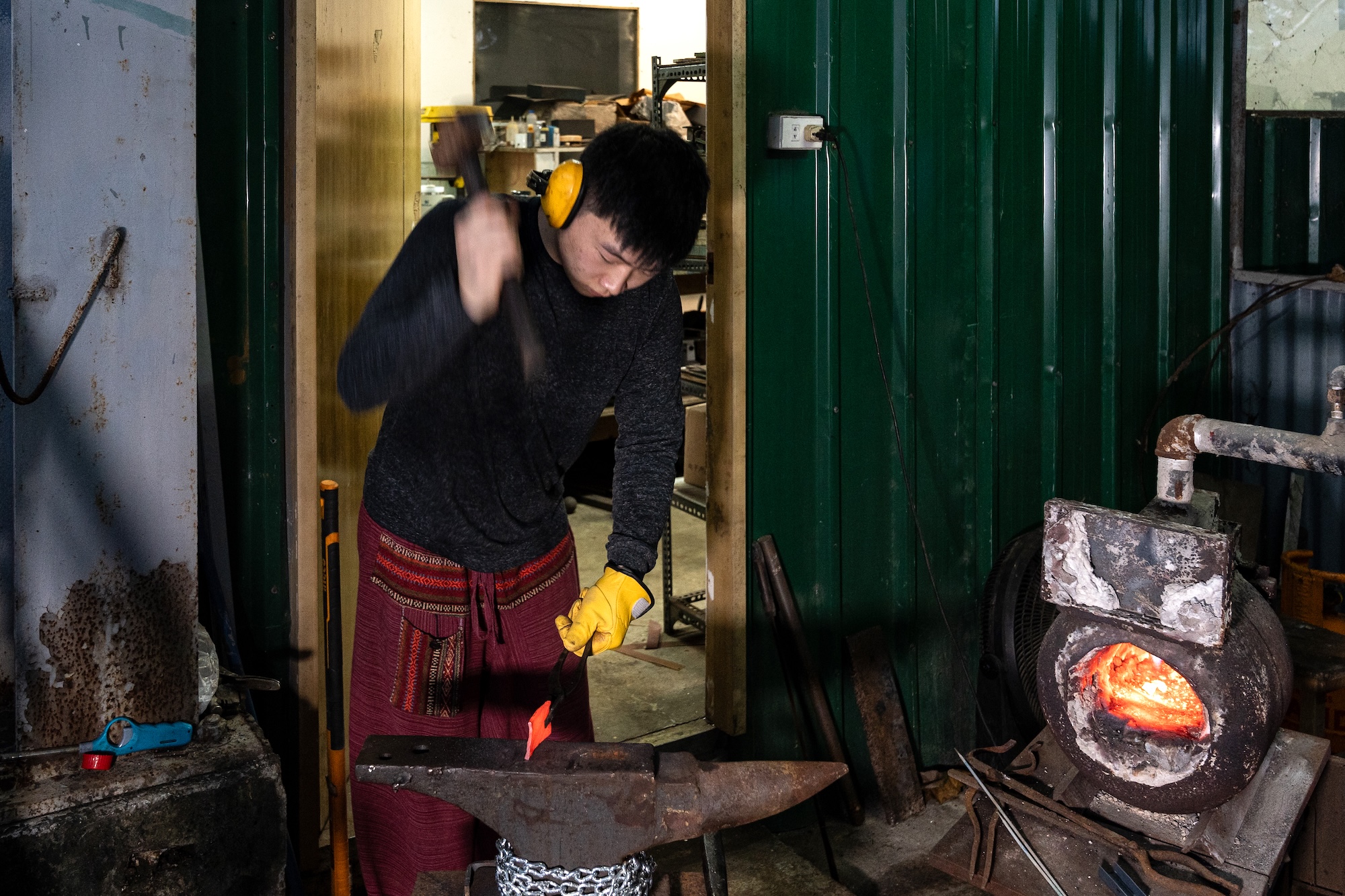
Just outside his studio, Alonzo ties a chain around his sand-filled, single-horn anvil where he forges different types of steel in an attempt to stabilize the metal block but it is neither useful nor beneficial at the moment. However, he steps back and appreciates the new positioning of the heavy tool before proceeding to demonstrate the differences in clanks, sounds, and bounces that pure steel makes based on where you hammer it.
“This anvil has a hardened steel surface, and this hammer has a hardened surface,” he explains. “If you hit it against this surface [in the middle… it bounces]… the two surfaces squish the material and that contributes to moving it.”
Right next to him is a self-assembled forced air burner that’s kind of like a turbo for a car. It forces oxygen into a furnace that heats up to over 700 degrees Celsius where he deposits a slender and clay-like mild steel he’s molding into a display stand for one of the exhibit pieces.
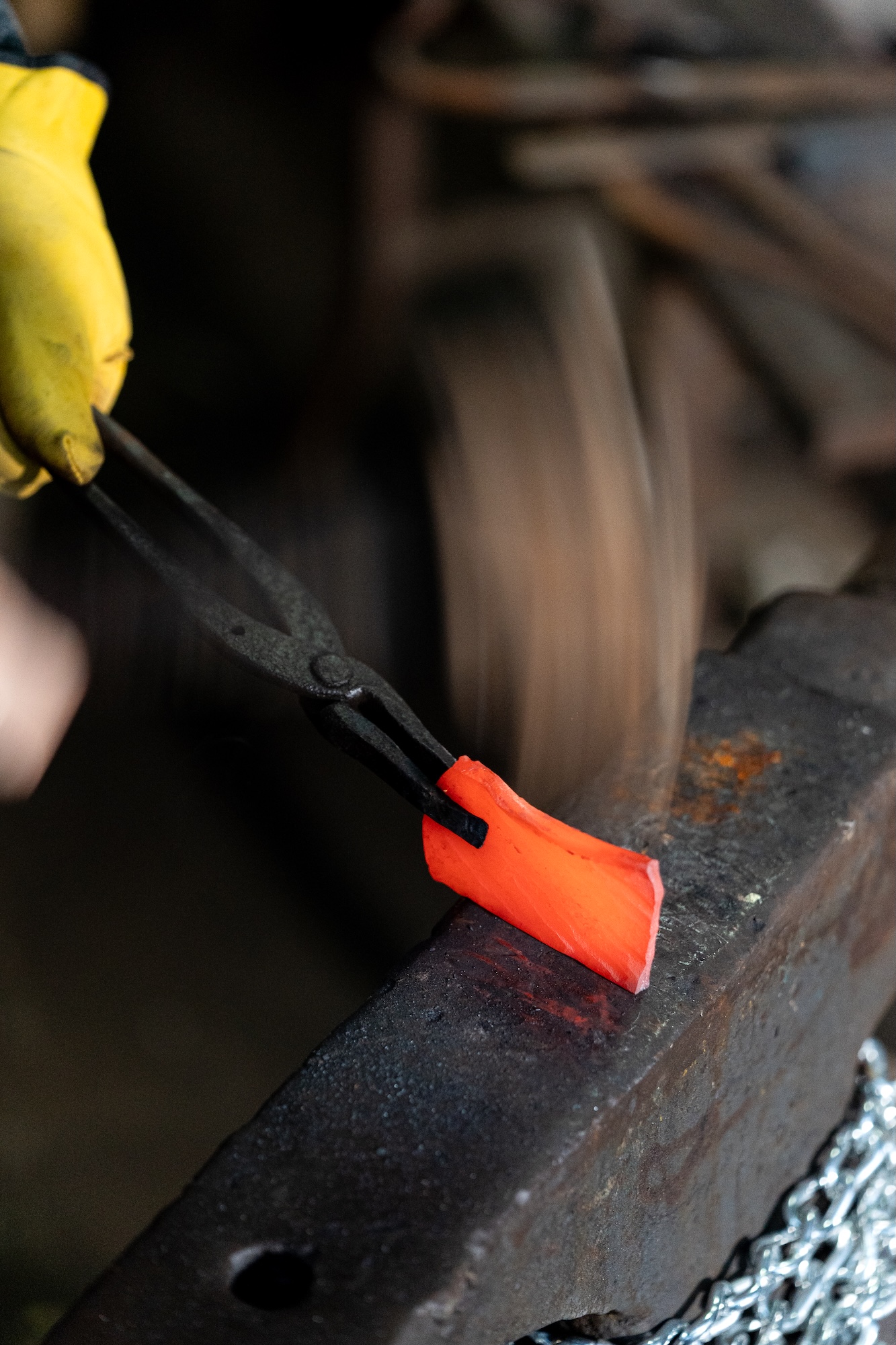
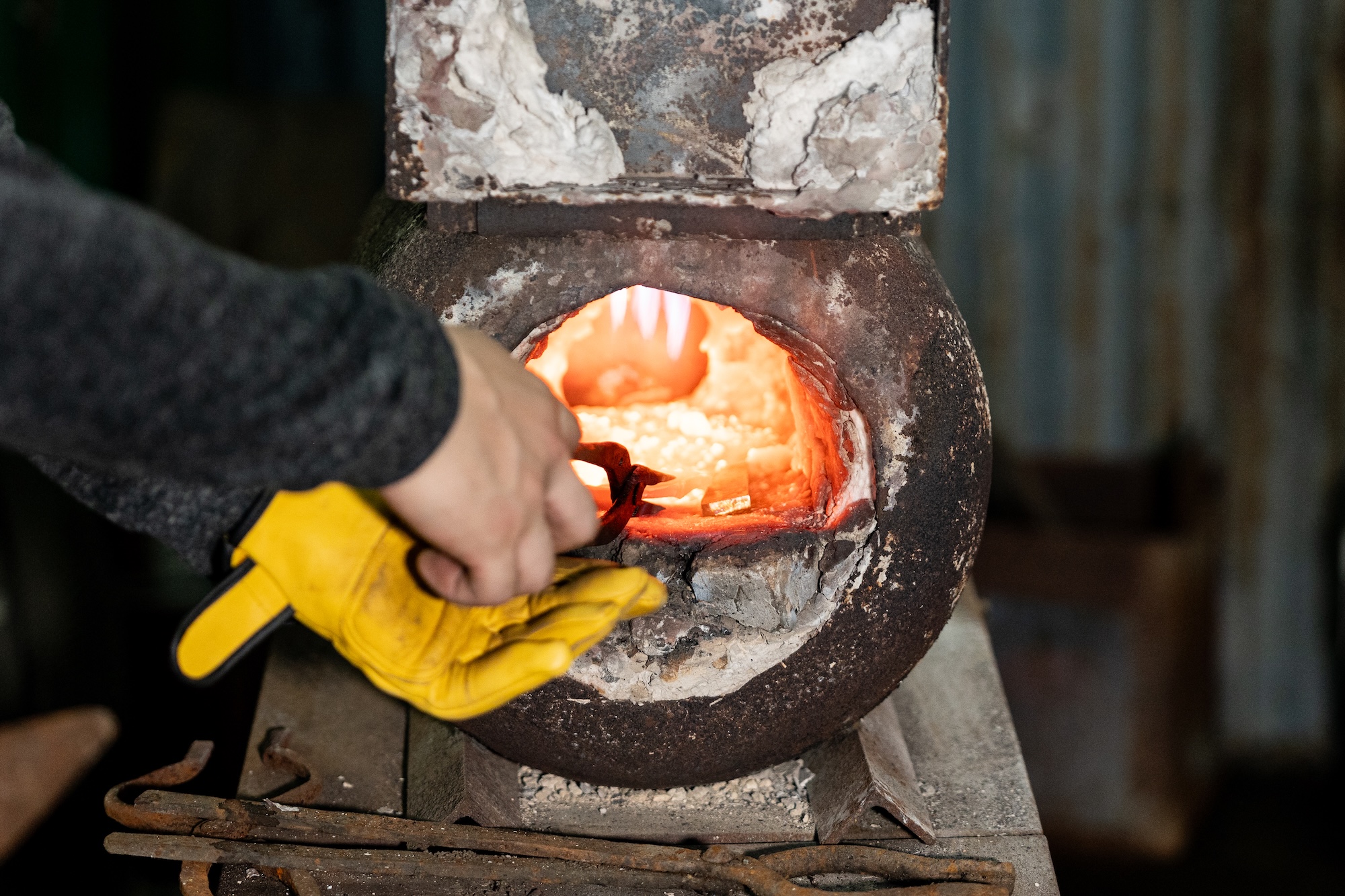
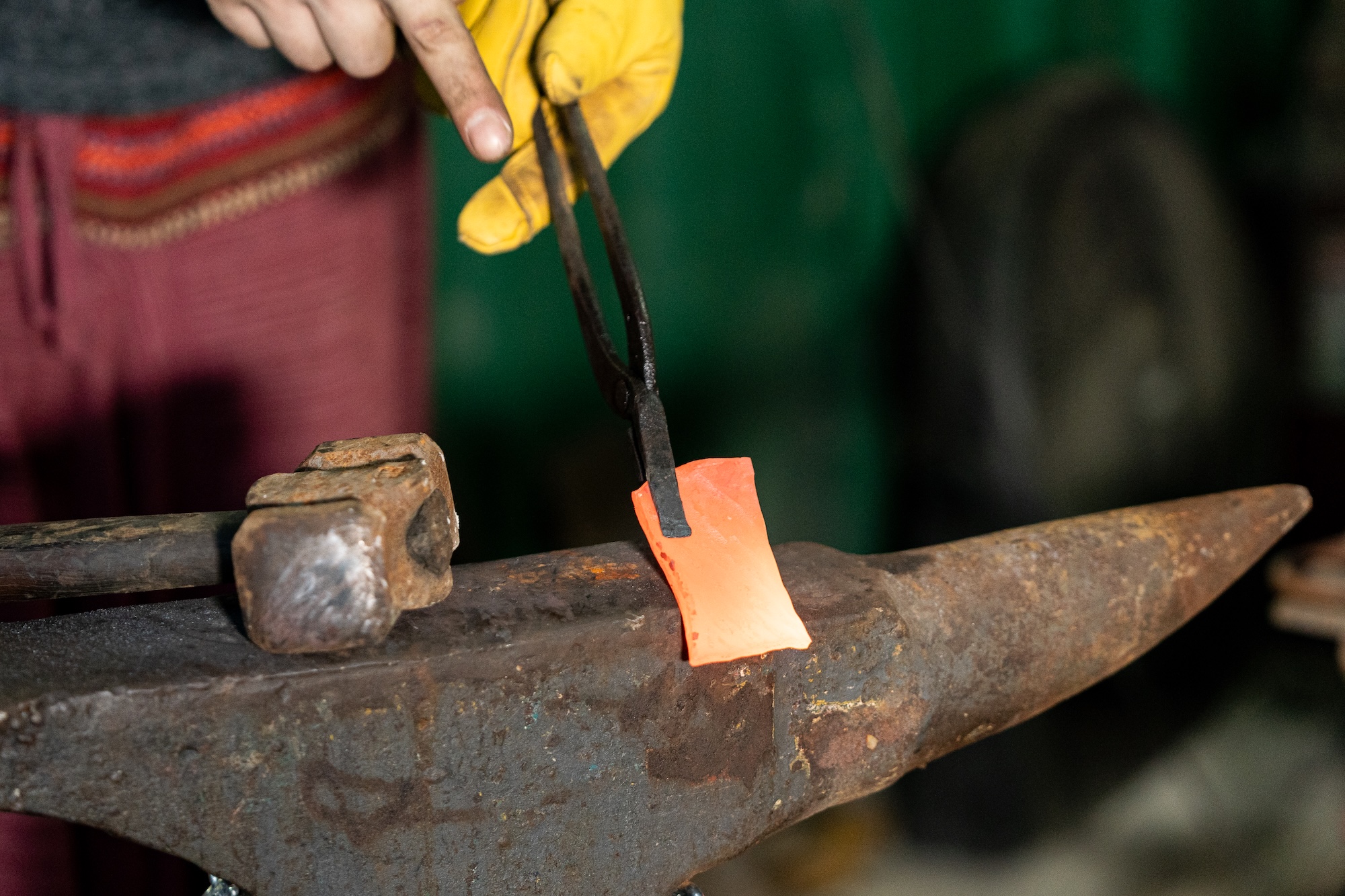
Alonzo’s flirtation with knives as art is a natural progression from his days when he began almost exclusively with chef’s knives. “It seems the market has taken a turn towards folding knives,” he explains. “During the pandemic, like every year, it’s been chef’s knives all throughout but then now people stopped being so into it, like a lot of knife makers actually almost either went out of business or shifted because the bubble for chef’s knives burst.”
Fortunately, Balete Blades shifted fast, turning an “ADHD passion project” into an actual stream of in-demand cult favorites and launching two main models named after “cafes I like frequenting”: The Curator and The Ani folding knives.
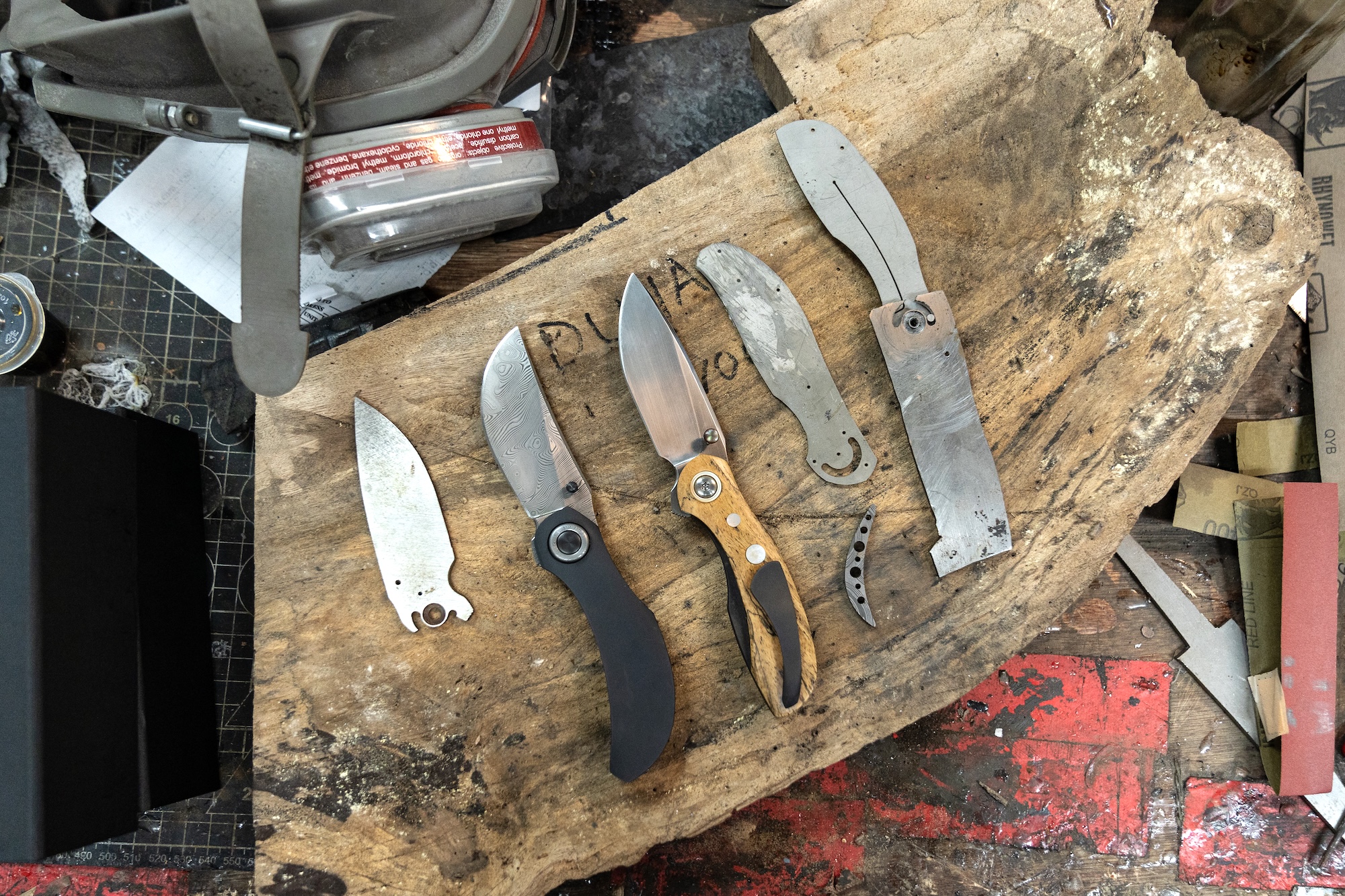
With a frame lock design and ergonomic blades made of titanium and Damasteel—a patented and trademarked method of making stainless Damascus steel that achieves distinct grains from all the welding, folding, bending, and twisting of different steels—it’s understandable why these folding knives have become well-loved commodities.
Award-winning culinary icons Jordy Navarra of Toyo Eatery and Crosta Pizzeria’s Yuichi Ito (recently ranked the 22nd best pizzaiolo in the world) are both fans of Sean Alonzo’s work, too
“The Curator is the very practical one, which I like because the blade is like a recurve drop point blade and then The Ani is an S-curve knife, which I personally find really attractive.”
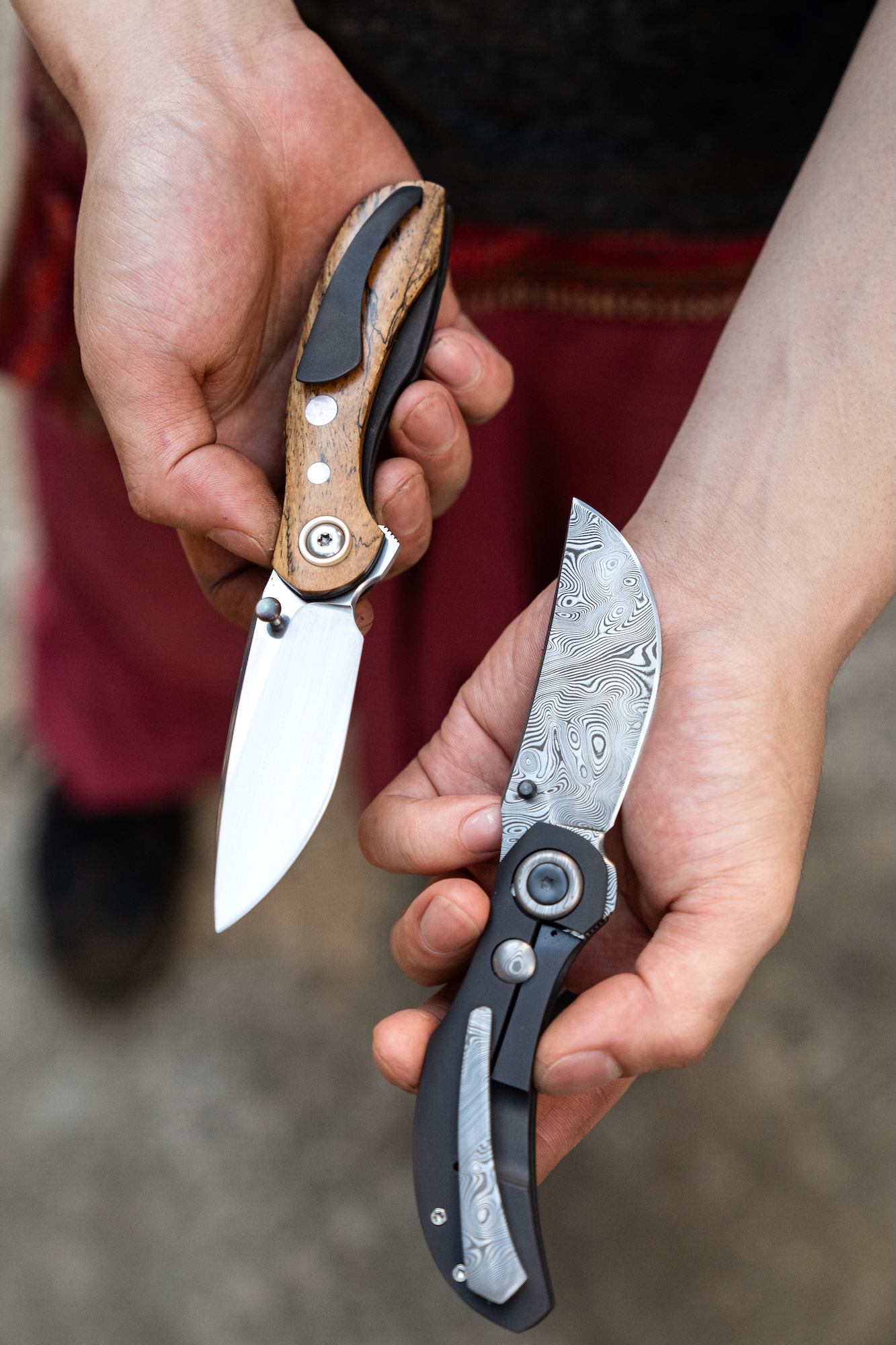
Apparently, a lot of customers seem to find these knives seductive, too. Award-winning culinary icons Jordy Navarra of Toyo Eatery and Crosta Pizzeria’s Yuichi Ito (recently ranked the 22nd best pizzaiolo in the world) are both fans of Alonzo’s work, too.
“Jordy wanted a bunka that could be used for everything he does in the kitchen,” explains Alonzo. “Like a general prep chef’s knife that is tall and robust but not too long because he doesn’t like to take up other people’s space when he’s cutting.”
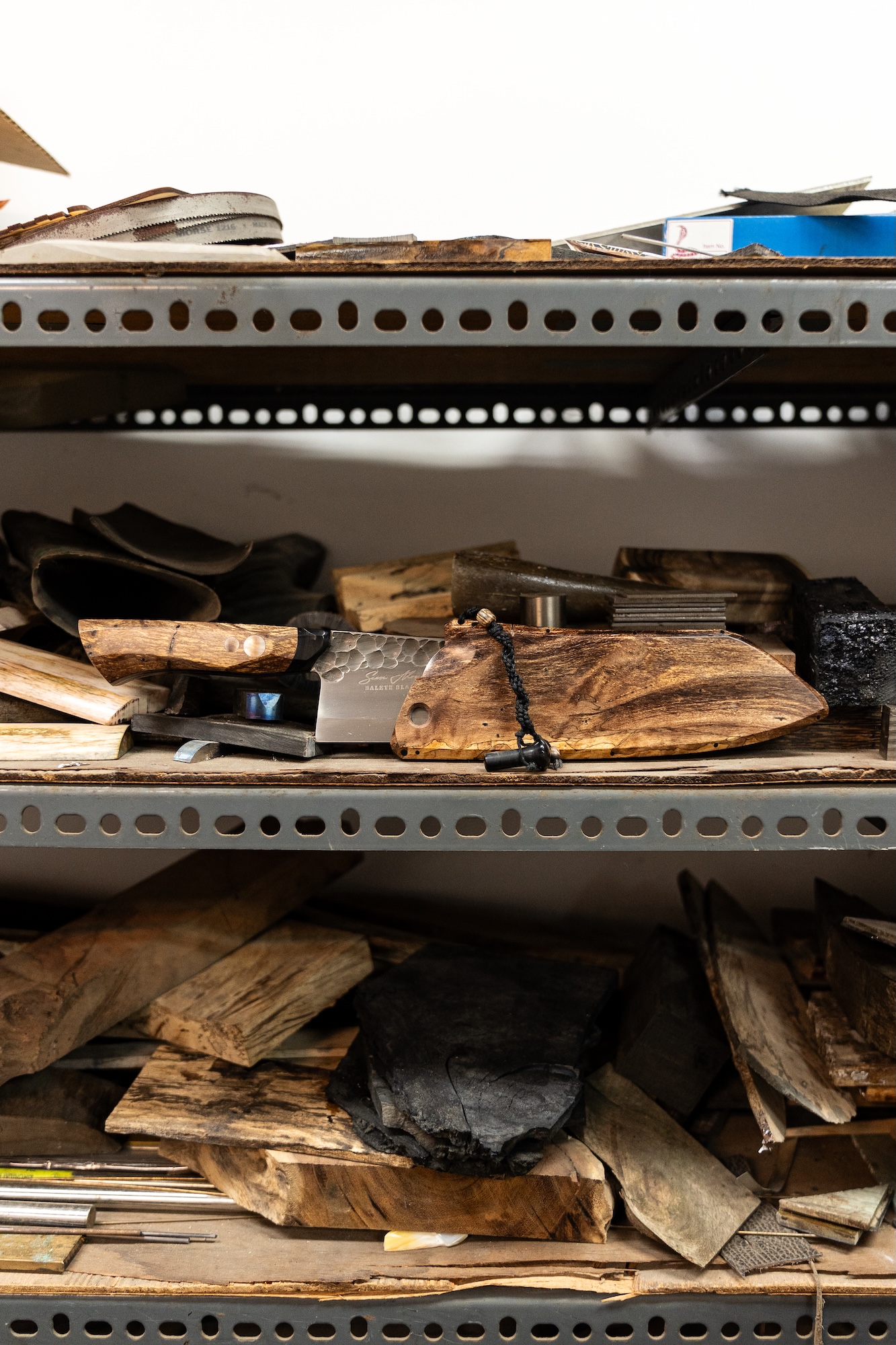
Resting on the main workshop table among the raw materials, manipulated matter, and metalworks in progress, the elegant knife is designed to suit Navarra’s specifications, kitchen requirements, and Toyo Eatery’s commitment to Filipino ingenuity. It measures 2.2-inches tall and 190mm long equipped with a high-end Nitro-V (a type of stainless steel that’s been infused with nitrogen and alloyed with little bits of vanadium) and a liner made of carbon fiber. The handle meanwhile is crafted from samak wood and embellished with natural Filipino components—oyster shells for rivets, carabao horn for the black accent that pops out, and a cloth braid that holds it in place.
“It’s a knife that holds an edge really well, but it’s a lot easier to sharpen. And the handle is very grippy because he has wide hands. So he gave me that design brief and then, based on that, I just made all of this.”
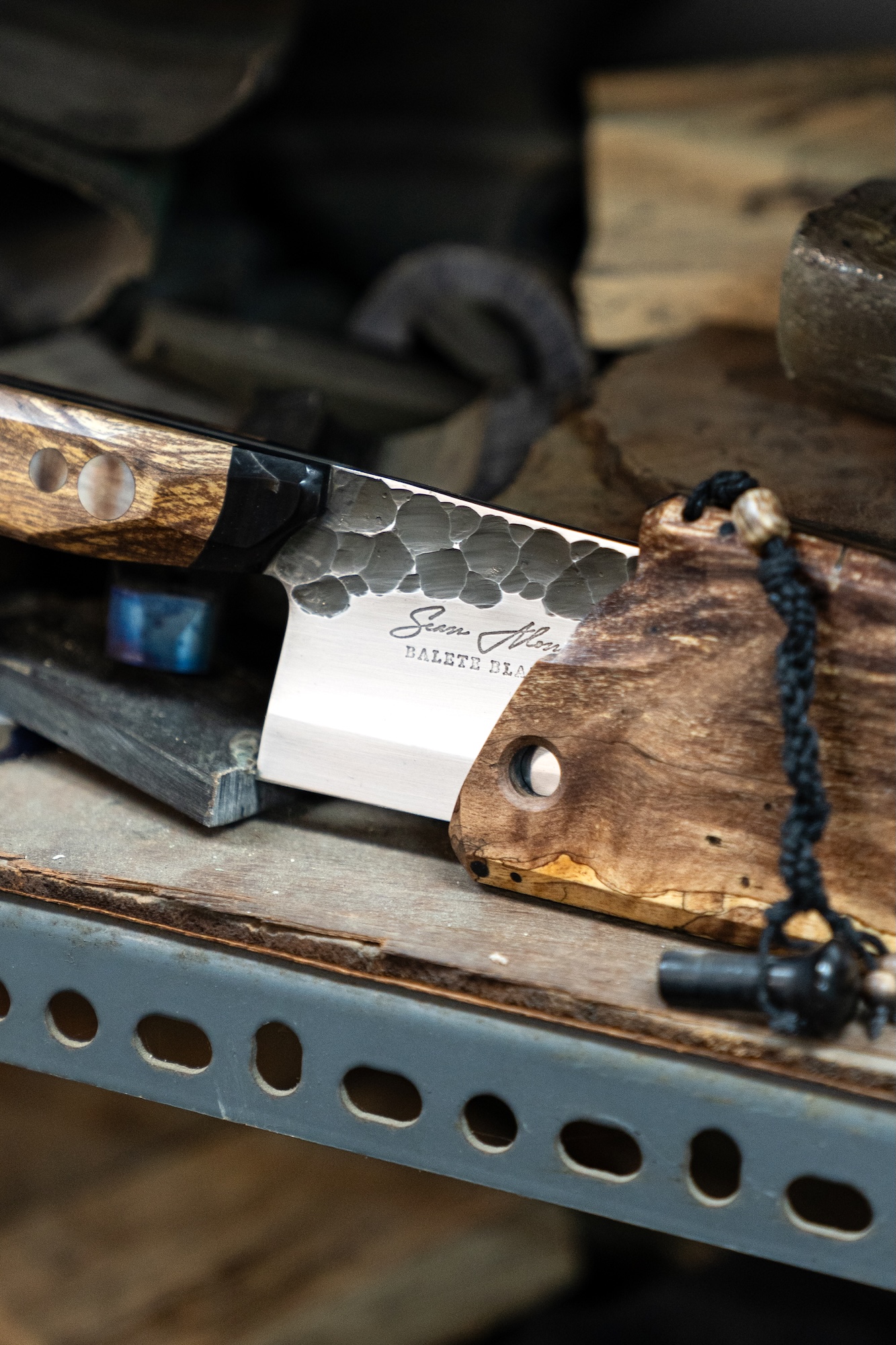
Things feel both similar and different with regard to making Yuichi’s exquisite pizza cutter, who, Alonzo said, “wanted something from a Filipino maker that could represent his roots in the Philippines.” The only problem was that he had never even thought about making one. “But then every other week, he bothered me about it.” So, with full creative control, Alonzo finally gave in.
“When he received it, he wouldn’t put it down,” he shares. “And then his [former] boss [at The Pizza Bar on 38th] got jealous, so Daniele Cason also got one.”
His identity is pin-sharp
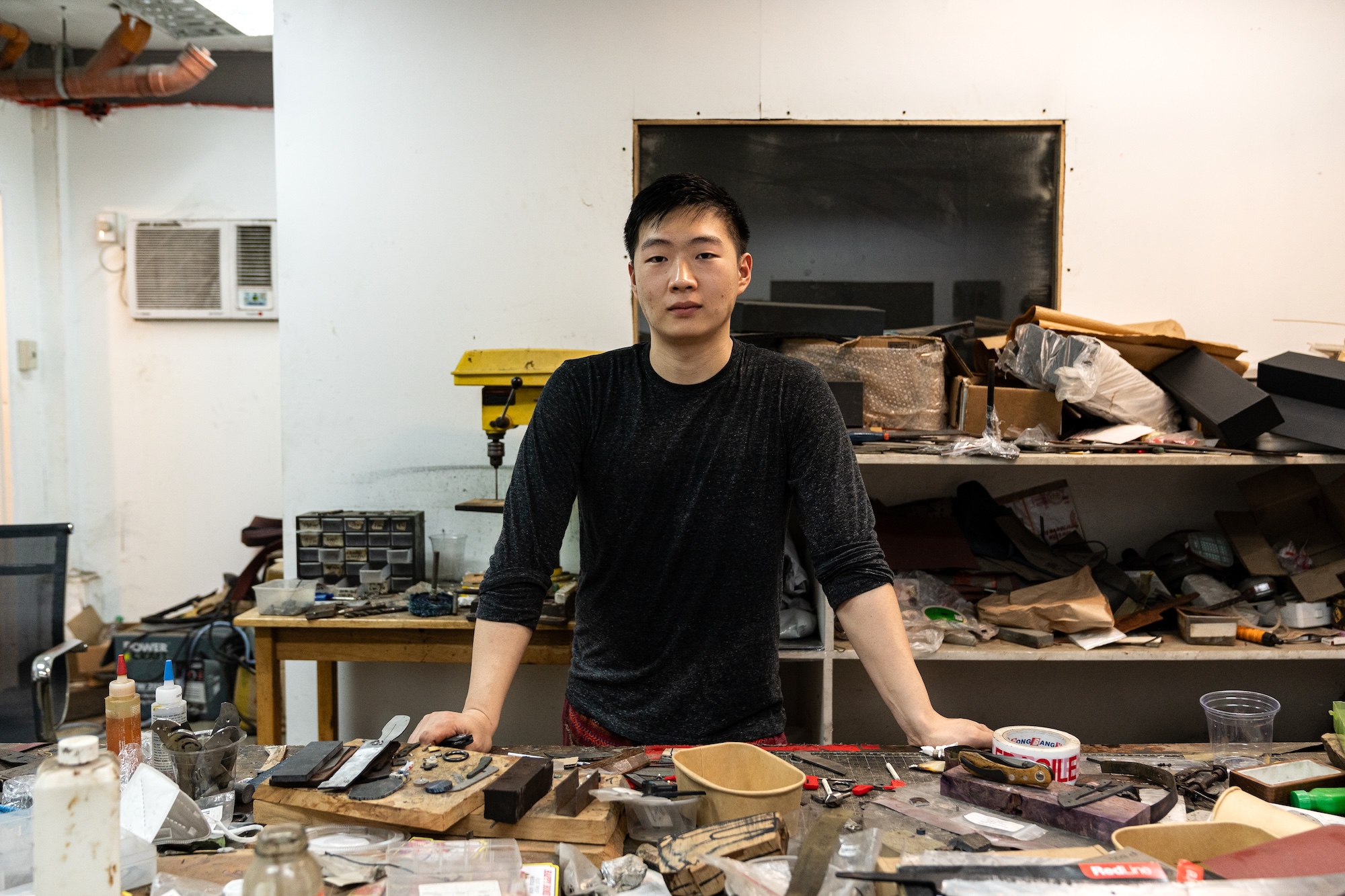
For all the recognition Alonzo has received—including one from the King of Bhutan himself who asked him to teach select students in the Himalayan kingdom—and the inspirational beauty and brilliance that Balete Blades can command, there are still those who see the whole craft itself, in particular the high premium such knives can fetch, as completely pointless.
“‘It’s just a knife. We could get it at SM,’” confesses Alonzo about the biggest misconception about knife making.
“Yeah, you can,” he says defiantly. But in truth, these monolithic comparisons are unfair to say the least. More like art than simply just tools, custom, handmade, and artisanal knives are the outcomes of lifelong explorations of all-consuming passion and, in some cases, even personal identity.
“I didn’t come into this wanting to make a knife. I came into this work wanting to make something valuable that people would value”
“I didn’t come into this wanting to make a knife. I came into this work wanting to make something valuable that people would value,” conveys Alonzo. “I tried making tools, it didn’t work. I tried making utility knives, it didn’t work. I tried making traditional Filipino swords, it didn’t work. And then I made chef knives, and then it finally worked.”
“It’s a lot like cooking where you have to really love the process of working with your hands and devoting a huge chunk of your life into making something valuable, you know?”

To reduce the art of making something extremely valuable for someone and then never seeing it again is nothing short of myopic. Yes, it might just be a “tool” yet to discredit the design and effort that go into a handcrafted knife, the experience and the joy it makes you feel when using—or even just holding—someone’s legacy is a disservice to art and craftsmanship as well as the man-made tools that are intrinsically linked to human history.
Top of the chops
Back inside the studio, Alonzo is analyzing the prototype of the copper-shimmed bolo for the exhibit.
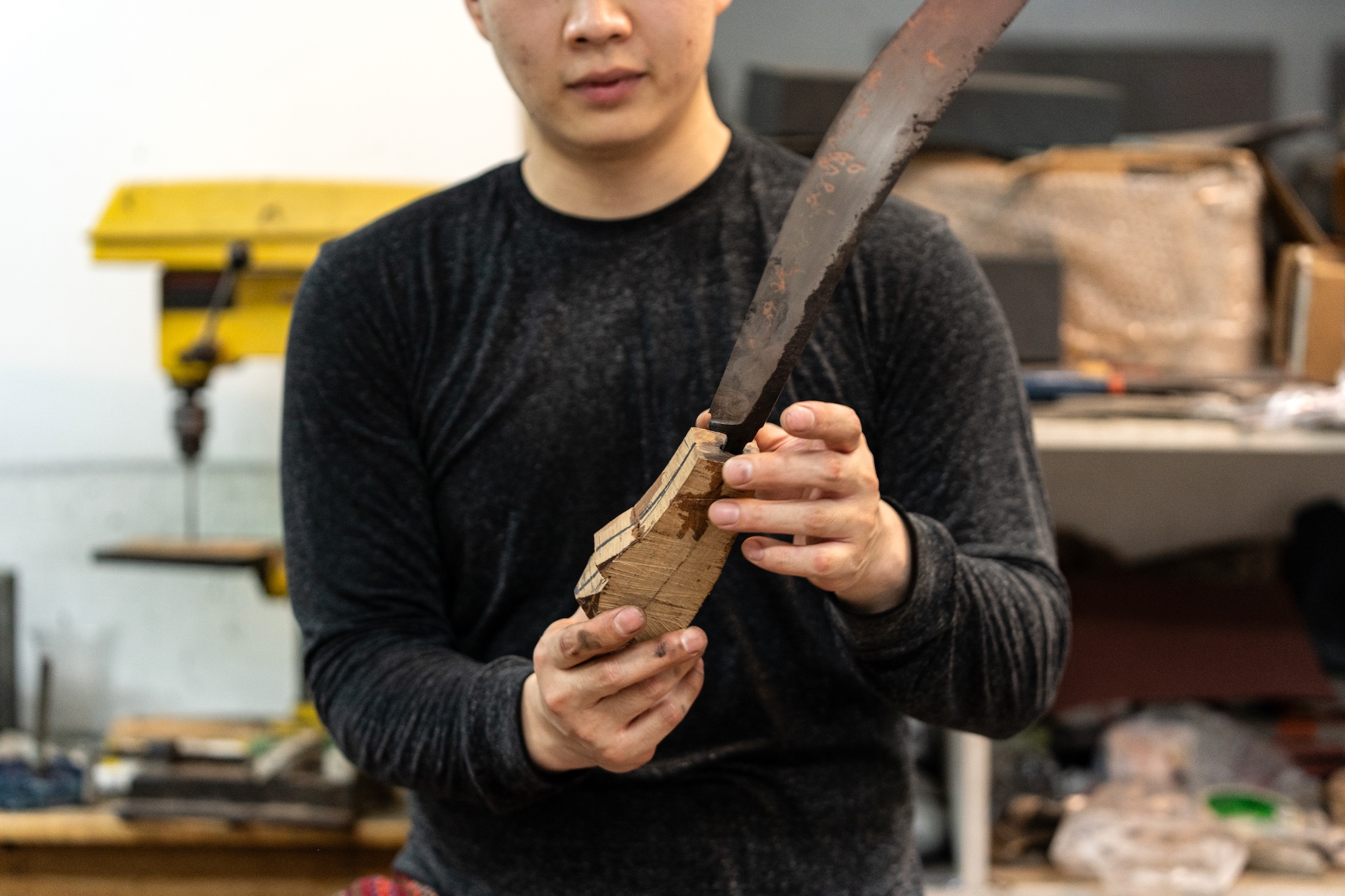
It is one of five pieces he’s been working on to celebrate Filipino materials and craftsmanship. But it is also a piece, specifically the yoke, that holds affective power. “So the yoke is made of narra and it was used for like over a century on a carabao in Northern Luzon. I think the antique collector I got it from said that it was from there,” he explains, before pausing to reflect on the metaphor of slavery that such a wooden beam evokes.
“I’m really excited to do this with them because this is like one of the first times I get to explore not just design but also art into the work,” he says. “The sculptural art of the display, and then the sculptural art of the knife, and the science and design behind the function of the blade.”
Sean Alonzo, the metalbender
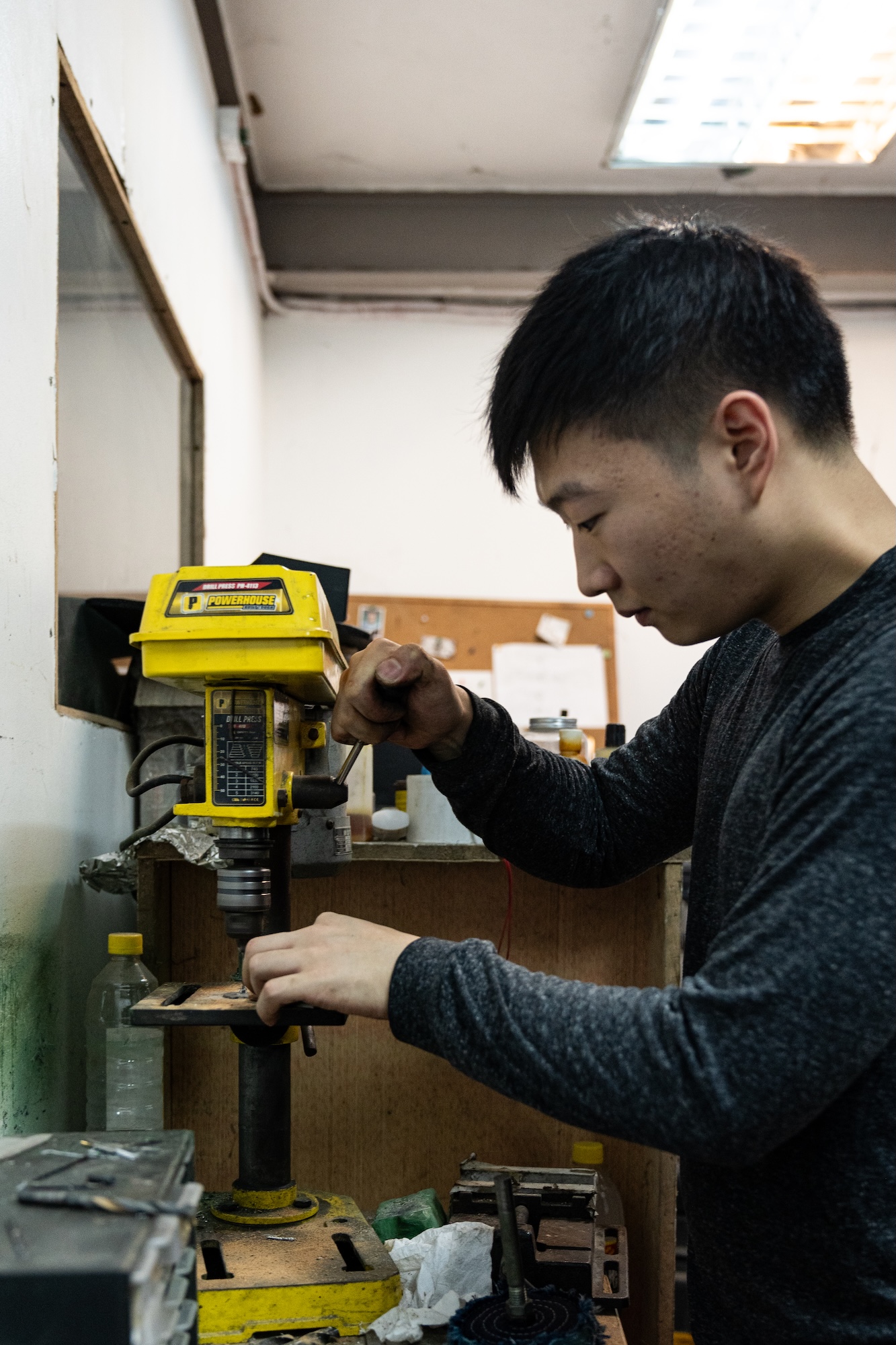
As he continues on his holding pattern of moving from one station to another, pondering about the tools and materials needed to finish the piece in time for the exhibit, his energy intensifies when probed about his favorite materials to work with. By his own admission, local materials have more resonance and bring about greater joy. His devotion to native timber in particular is palpable.
“It makes me happy. I don’t know why,” he says, as varieties of stabilized duhat wood gifted by an Aeta friend, different species of kamagong—a blanket term for dense, dark wood—samak, batibot mango, cypress, and other fruit woods seemingly dot the amorphous milieu.
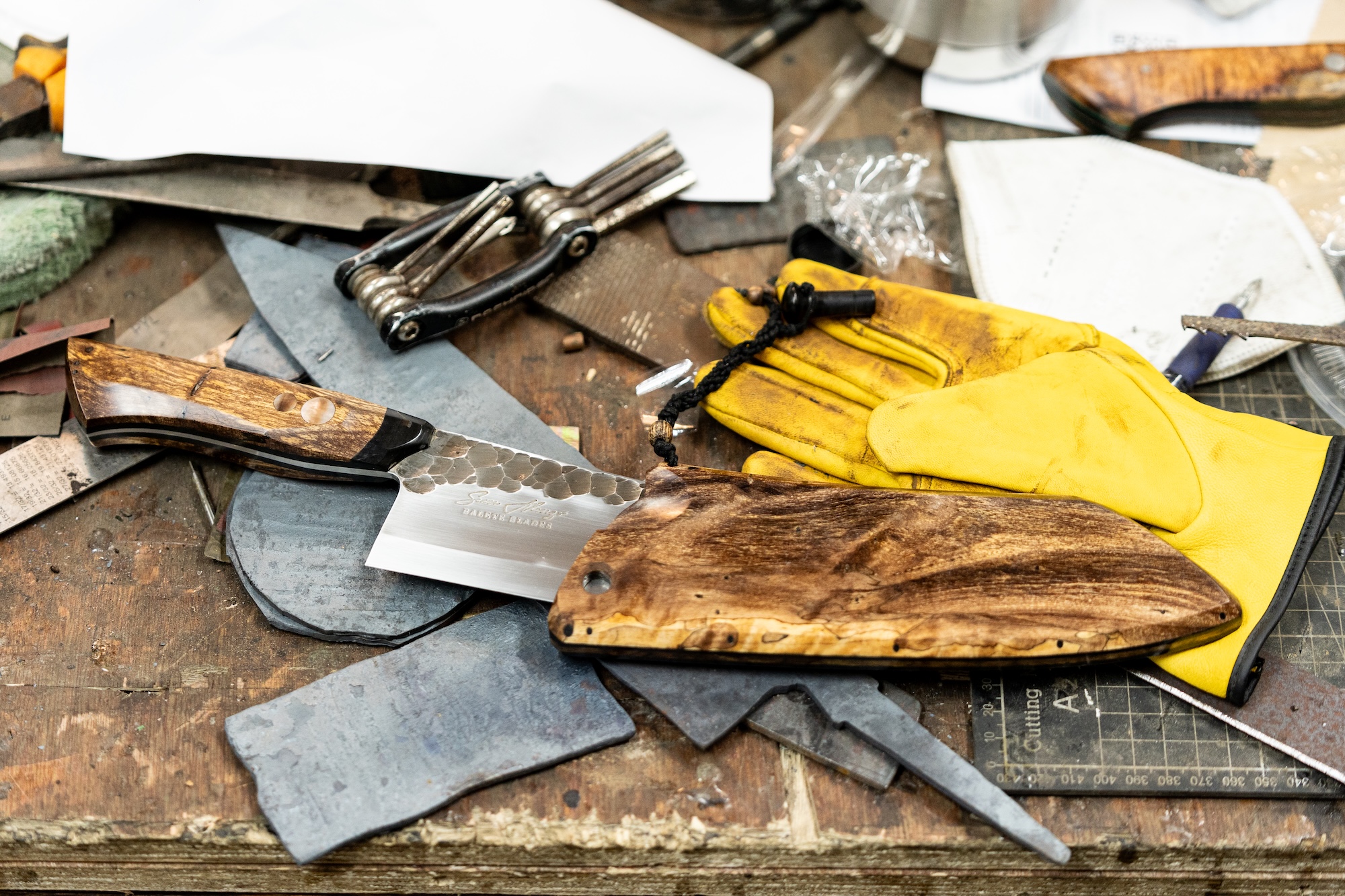
“And then we have madre de cacao, which is medicinal wood. We have yakal, which I don’t really like using so much because it’s kind of boring. We have heirloom woods that come from houses like narra and an all-time favorite is carabao horn because it’s something super iconically Filipino,” he says enthusiastically. “I can polish it to a really high luster and it doesn’t look like plastic. It’s warm. It’s like hair. Whenever you touch it, it’s comfortable because it’s unlike plastic, which is generally cold, lifeless, and static.”
All things that he isn’t. Truly, seeing Sean Alonzo the bladesmith, knife maker, designer, and artist at work—that is, sculpt, forge, bend, break, hammer, design, manifest, create, invent, plot, mold, cut, slice, drill, draft, illustrate, beat, polish—is a cheerful sight.
“Good design is all about balance, especially when we’re doing tools. They fundamentally have to be a tool first”
Zipping from the 3-axis mill then boring a perfect hole using a four-fluted reamer and then rummaging through the artistic mess to show the vegetable cleaver and its duhat wood handle, and finally back to answering a question about whether an interest in metallurgy is mandatory to be able to craft a career in making knives (no, you don’t), you’d think the spring in his step automatically translates to his knives. Far from it, actually.
For as sprightly as Alonzo is in person, its side effect is an unflappable restraint in design choices.
“Good design is all about balance, especially when we’re doing tools. They fundamentally have to be a tool first,” he says. “We shouldn’t put, I don’t know, too much metal in the handle because you’re going to throw off the balance. And we have to work within the design constraints of a knife. So it absolutely has to perform like a knife.”
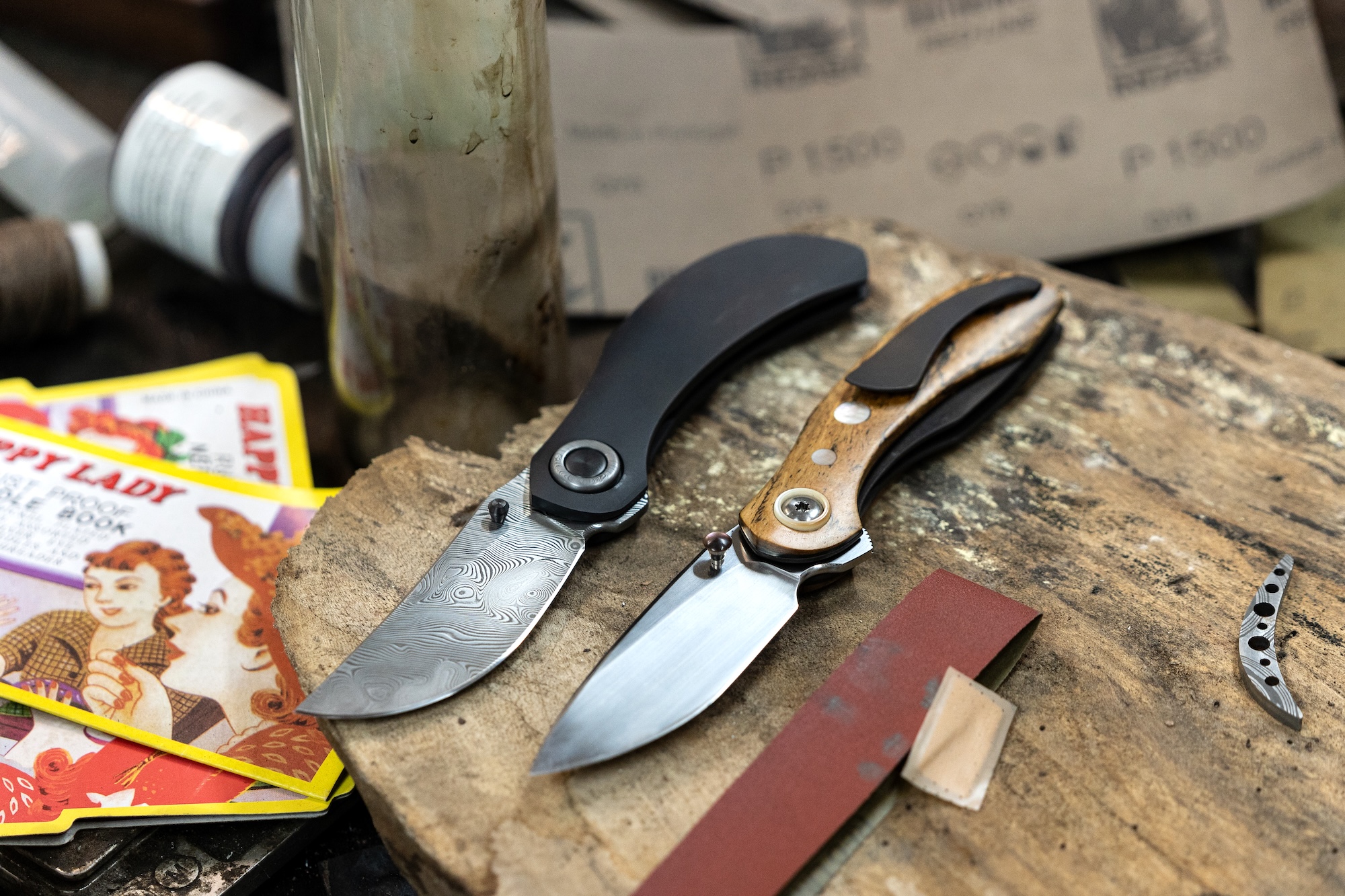
Earlier in the day, Alonzo looks back on the time he started his career in packaging and furniture, which he admits worked really well for a while and had some semblance of stability, “but then I wanted to do something more meaningful.”
“I would spend 40 hours doing a collection of 12 different products and after six months, it’s going to go to a manufacturing plant to be manufactured in, like, 100,000 pieces,” says Alonzo. “Morally, it didn’t feel right and relative to the effort I was doing, I don’t think it was for me.”
Years later, Alonzo still spends 40 to 60 hours, roughly the same amount of time he dedicated to before, creating something from scratch—whether piece by piece or by batch—but the difference then and now is what you’d expect from that rare breed of artist like him.
In complete silence and with each pounding of his forging hammer, Alonzo has found his labor of love.
Story by Eric Nicole Salta
Creative direction by Nimu Muallam
Photos by Samantha Ong

